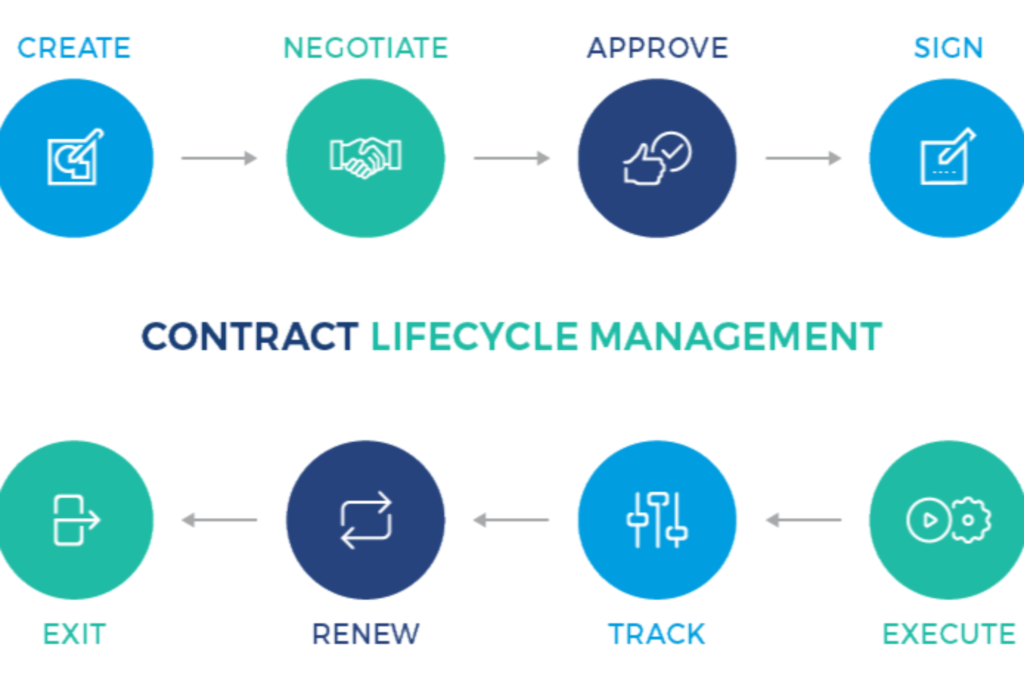The Top 5 Contract Management Frustrations and How to Overcome Them

Most in-house counsels are spending too much time searching for and trying to locate contracts that are stored in multiple locations of their business. If a company has been around for some time, or if they have grown through acquisition, it can end up having contract databases in a dozen or more locations.
This Artilces aims to take some of the frustrations out of contract management and provide counsel with the comprehensive and simple solutions they so desperately need.
#1 Frustration: We spend too much time on contract research, review and trying to find contracts.
This common circumstance can overload legal and slow down other departments because so much valuable time is lost when it comes to contract request turnaround.
When the legal department finds themselves in this inefficient and somewhat chaotic situation with contract administration, the best thing to do is find a solution that will help simplify things.
To start, you need a single, searchable repository that will provide complete and accurate data when it comes to these vital documents. The tech solution should also integrate seamlessly with your business software.
For example, if the sales team uses Salesforce, you want them to be able to search the contract management solution within that application. With a click of a mouse, they should be able to see the contract and all of its pertinent information.
Secondly, this repository should include self-service access so anyone with authorization can search it. The amount of wasted time and unnecessary stress it will eliminate for in-house counsel is immeasurable.
Frustration #2: We have competing priorities: providing broader business value vs. legal efficiency improvements.
The second frustration most often heard about is the pushback that counsels can sometimes get when it comes to getting approval for an efficient contract tech solution. This comes about because oftentimes it’s looked upon as strictly an “administrative” need, rather than a value proposition for the business.
Operational Alignment: Keys to Navigating Competing Priorities
How can you get operational alignment so management can see the business value of putting a workable contract management system in place?
As legal, your priority is you want to be able to control your work better, and you want to invest in tools that make it easier to do your work.
The business priority is to control costs and to invest in tools that deliver value and increase revenue.
If you want procurement of the right tech solution approved, then it becomes legal’s job to align these two in the eyes of management. To understand better how to do this, let’s break down what we mean by “alignment.”
What Alignment is NOT
Sometimes it’s helpful to look at something in the negative first. Alignment is not solving something that is only painful for the legal department but not for the rest of the business.
The way you work with salespeople might be painful, and you might want to implement many steps and processes around it to reduce your pain. But remember that it’s only painful for you. If you add a bunch of touch points and slow down the company’s contract velocity, the business is not going to support that.
Tools that make it easier for legal to manage work but add process and time to contracting for the rest of the company will not be popular and are not alignment.
What Alignment IS
Legal priorities and business priorities–how do you align those?
You tie the contract solution to the strategic goals of the business. That means achieving and supporting operational improvements for the whole business, not just for legal.
When you do that, you should be increasing the velocity of your contracts. The faster the business can create contracts, the faster it books revenue, the faster it invoices revenue, the faster it recognizes revenue.
Prioritizing better revenue contracts always aligns with business priorities.
FRUSTRATION #3: How do I avoid a lack of buy-in and low adoption?
Don’t feel bad that you as a legal professional may not know how to navigate around the pitfalls of implementing a new tech solution for contract management. Unfortunately, there is no course at law school for “Technology Adoption 101.”
But the following is a good roadmap to follow when it comes to rolling out a new CMS.
Business Mandate or Departmental Initiative: Keys to Driving Buy-In
Departmental initiatives are often where contract management solutions begin. If it’s the legal department that’s initiating the improvement, ask yourself the following questions:
What is most painful about the current state of contract management? What has to change? How will the improvements in contract management that we want the business to invest in improve the company?
Design your solution to resolve the pain and make the improvements that clearly support or enhance the value of the broader business.
On the other hand, if you’re being issued a business mandate to get a better contract management system in place, these are great if they’re the right mandate.
If it’s the company that’s initiating a tech solution for contract management, first, be glad that you have a mandate. Next, make sure you’ve been given the budget to comply.
Once you know that, then assert your ownership of the decision, and stay focused.
Establishing the repository first will provide immediate value. (Forget the “boil the ocean” approach as that will bring failure.)
Then, get to the important data in all your contracts. It’s so important to get all your contracts in one place because that generates efficiencies throughout the company. Once you do that, it will help you determine future requirements for the contract lifecycle management.
What is adoption?
Don’t start thinking about adoption only after you’ve selected your technology solution. The time to think about adoption is before deciding on the solution. Consider a more complete picture of what adoption is with the following points:
The solution needs to be part of the relevant user’s daily work, not something extraneous or separate.
The solution should be used for the purpose it was designed for. If it was designed to accomplish three things, but it’s only going to accomplish one in your company, then you’ll be paying for things that won’t be utilized.
Be sure that prior methods, processes, or solutions can be replaced by the new technology and that alternative methods or workarounds won’t be preferred over the new solutions.
What are the components of adoption?
When overseeing the contract management initiative, legal has to take the lead in making sure sufficient information, communication and training about the solution are imparted to the various teams who will be using it.
These interactions and briefings should result in employees feeling prepared and ready in the key aspects of successful adoption.
Mental – they should really understand why adopting the new solution makes sense for them and the business.
Caution: Avoid major change management, like imposing new workflows.
Emotional – they should feel comfortable embracing the new way of doing things, and not be afraid to give up the former way.
Assure your teams that you won’t “end-of-life” your old database/server too soon.
Practical – they should know how to use the new solution and be able to demonstrate this. This aspect will come down to sufficient and proper training.
To have a better practical outcome, leverage already adopted systems in the company. Integrating the new CMS with the company’s CRM is ideal.
FRUSTRATION #4: I was oversold on contract AI and other legal tech.
Artificial intelligence abilities are often overstated so it’s easy to be oversold. But learn to look past sales pitch.
Contract Technology: Keys to Digging Deeper into Legal Tech and Contract AI
There is no magic “AI button.” There are firms that do it well but realize that humans are always needed.
When using AI capabilities, be skeptical and ask the right questions. Direct those questions not just to the salesperson but require references before accepting what’s stated in the sales pitch. In other words, ask those who are using it.
Understand how the AI will be used. That’s always important. When it comes to contracts, if there aren’t any automated decisions being made, it’s unlikely to be a concern.
However, if there are automated decisions being made, understand what data the AI is using and audit the outcomes to make sure there is no unintentional discrimination by proxy happening.
FRUSTRATION #5: Vendors aren’t listening to what we really need.
It can be downright annoying when the reps of a legal tech solution proceed as though they know more about your pain points than you do.
When this happens, navigate around it.
Stay Focused: Keys to Filtering Out the Noise During Evaluation.
Have your requirements in place before you start receiving proposals.
You don’t need to be an expert in technology to come up with your requirements. They can be as simple as, “I need a single contracts repository where all my contracts are digitized and fully searchable.”
Look out for extra features that are required to make the solution work. For instance, you might give the vendor your simple requirements above, and they tell you in order to meet those requirements, you need to adopt other things as well. You’ll spend your time doing additional administrative work if you go with a tech solution that comes with those requirements.
Avoid solution providers who are trying to disrupt your current way of doing business. You want vendors to enhance the way you do business.
Don’t be tempted to address other problems that you didn’t set out to. No human is immune from the distraction of shiny object but realize it’s a trap. The next thing you know, a project that you were going to have value from within weeks or months of procurement is now going to take two years.
Look for quick wins. Once you succeed, you can build on that success. Choosing to stay focused and start with one thing and get it right won’t preclude you from doing the other things on your list at the right time. It will put you in a position to be more successful with each phase.
Key Takeaways for Avoiding Contract Management Frustrations
- Visibility first–get the data. Digitizing all your contracts in a single repository is the best practice to start your journey.
- Justify the business investment. Prioritizing your sales and revenue contracts provides the best justification.
- Stay focused. If you want to do all of your contracts at one time, rethink that and start with one–for example your sales contracts. You can then use what you learn and apply it to the others when you’re ready to take them on.
- Avoid the AI hype. Technology can do a lot of things, and some of those things are impressive. But select technology for what it does, not for what you imagine it doing.
- You are the expert on you. It’s fine to listen to the vendors when it comes to information about their contract management systems, but just remember that you know more about the problems you and your legal team face than anyone else. Validate, get references, and understand other professionals’ real experiences with the tech solution you’re considering.
Be sure to sign up for In-House Connect’s upcoming live programs, as they frequently discuss CLM best practices! As well, check out In-House Connect On-Demand for great CLE programs on contracts and CLMs!





